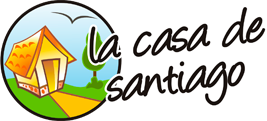Colca Andean Rituals
in colca Canyon
Peru is a place full of traditions and colors
Some traditions in Peru are definitely the result of the meeting of 2-3-4 cultures.
After the arrival of the Spanish we also received some other influences such as the Chinese culture, who came to Peru to work on the railroads and also on the large sugar estates owned by Peruvian landowners.
Of course, let's not forget that the Spanish also bought slaves of African origin, sold mainly by the English.
The españoles, Afros and Chinese contributed a lot to us, especially in Peruvian cuisine. That is why Peruvian cuisine is very rich and often smells like Africa, tastes like Spain and a little bit Arabic (Remember, the Arabs occupied part of Spain before the arrival of the Spanish to Peru.
This mixture occurred more in large cities, coastal valleys, inter-Andean valleys with very good fertile land.
And what does this have to do with Andean rituals?
The thing is that the mixture occurred more in places where it was not very cold and where it was not very high.
For example, in the Peruvian Andes you will never find an Afro or a Chinese.
The Andes mountain range is very beautiful but it also makes life difficult for the people who live there, due to the cold and the little existing arable land.
That is why in the towns above 3000 meters above sea level there was less foreign influence and that is why the native traditions varied little.
And some interesting ones were adapted, such as bullfighting.
In every small town in Peru there is always a plaza, a church and a place to bullfight.
Currently in some distant towns they tie a condor to the back of a bull and release it in that round area where the bullfights take place.
It is taken as a cultural revenge where the condor represents the local culture and the bull the Spanish.
Then the condor is released into the blue skies of the Andes and the bull is left tired and sometimes injured.
This gave rise to a book written by a Peruvian writer named Jose Maria Arguedas, in his work “YAHUAR FIESTA” or festival of blood.
In this book Arguedas explains in great detail the syncretism between two cultures.
Currently the distance by car in the city of Arequipa and Cabanaconde is 5 hours, but before it was 2-3 days by horse.
This allowed some Andean rituals to still be preserved.
Like PAYMENT TO THE PACHAMAMA, which is a ritual of gratitude to the earth conducted by an important person knowledgeable about this ancestral ritual where numerous elements that represent the 4 natural elements are used.
This ritual was banned upon the arrival of the Spanish, but still practiced by local people.
If you want to participate in one of these rituals you have to make your reservation well in advance.
